We happily went to reflow lab to solder the components. everything seemed fine and cool first, until we found out several components had footprints of wrong size. There had been some mistakes when making the footprints, particularly someone misunderstanding MSOP8 for SOP8 and reversing battery holder's pins. That was still doable, few jump wires, problem solved. But there was something more...
I had found a library of avr 32-bit chips, symbols correct, footprint seems legit, alright, let's use this! is what I thought at that time. However, after using 10 hours to hack 40+ jump wires of width 0.2 mm, length less than 1 cm connect a 64-pin TQFP packaged chip on the board, I was cursing my stupidness.
The package was TQFP 64 alright. Just that it was smaller than any other TQPF 64 package I had seen before. And, oh yes, checking the datasheet told me it was indeed TQFP 64 and some letter combination I had not seen before. Checking further, I found the footprint on the datasheet, clearly showing the rigth size. Apparently the library I had used was outdated.
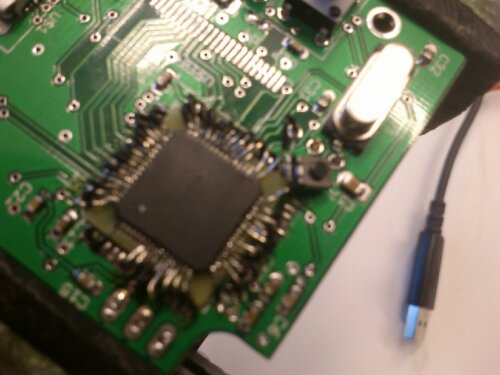
After 10 long hours, this resulted.
Okay, I guess everyone got the lesson. Always check the footprints, no matter how proper the libraries seem. Plan your schedule so that you have time for mistakes. Double check footprints. You'll save time doing that. There were some benefits in this too though. I learned how to solder damn small pins for instance. And everyone seeing the jump wires was like wow, how the hell did you manage to solder that? And of course, my patience got considerable boost enduring those 10 hours, resoldering after accidentally removing few of the wires I just had soldered.
That's all, happy checking, everyone!
[ add comment ] ( 4334 views ) | permalink | print article |




 ( 3 / 2457 )
( 3 / 2457 )Hello everyone, I got my headset mod ready few days ago (finally) and here's kind of a report of the process.
It all started with this Logitech Clearchat Wireless headset:Few years old headset, casing and frame was crumbling apart.
This headset, also known for a design mistake which causes the left headphone to cut and eventually go silent (it's just wire wearing and getting cut, see this), is quite good in terms of audio quality. So it would have been shame to throw it away, despite it was already old and I could've afford a new pair (from some other manufacturer). Since I had already opened it up a few times fixing the cutting left phone I had some kind of idea what was inside, so I decided I'd find some cheap wired headset and put the electronics from the old one inside the new pair. Time flew and I just couldn't find suitable headset, until I looked at the Peltors below on another occasion. They were soundproof, had lot of space inside and were relatively cheap.
Peltor ear protection set disassembled.So the project started slowly to proceed. I had already most of the tools:
Soldering iron
Drill with grinding heads
Small vise
Various screwdrivers
And that was about it. Some small stuff like wires, connectors and glue was also needed.
Here's some pictures of the old headset being opened up:
The PCB is pretty dense on components and since you only have the silkscreen markings it's quite a pain to figure what goes where, since it's a 4-layer board. I just used a multimeter to find out how the 8-pin connector (on top, white block) connects to some places which are easier to solder without fear of short-circuits.
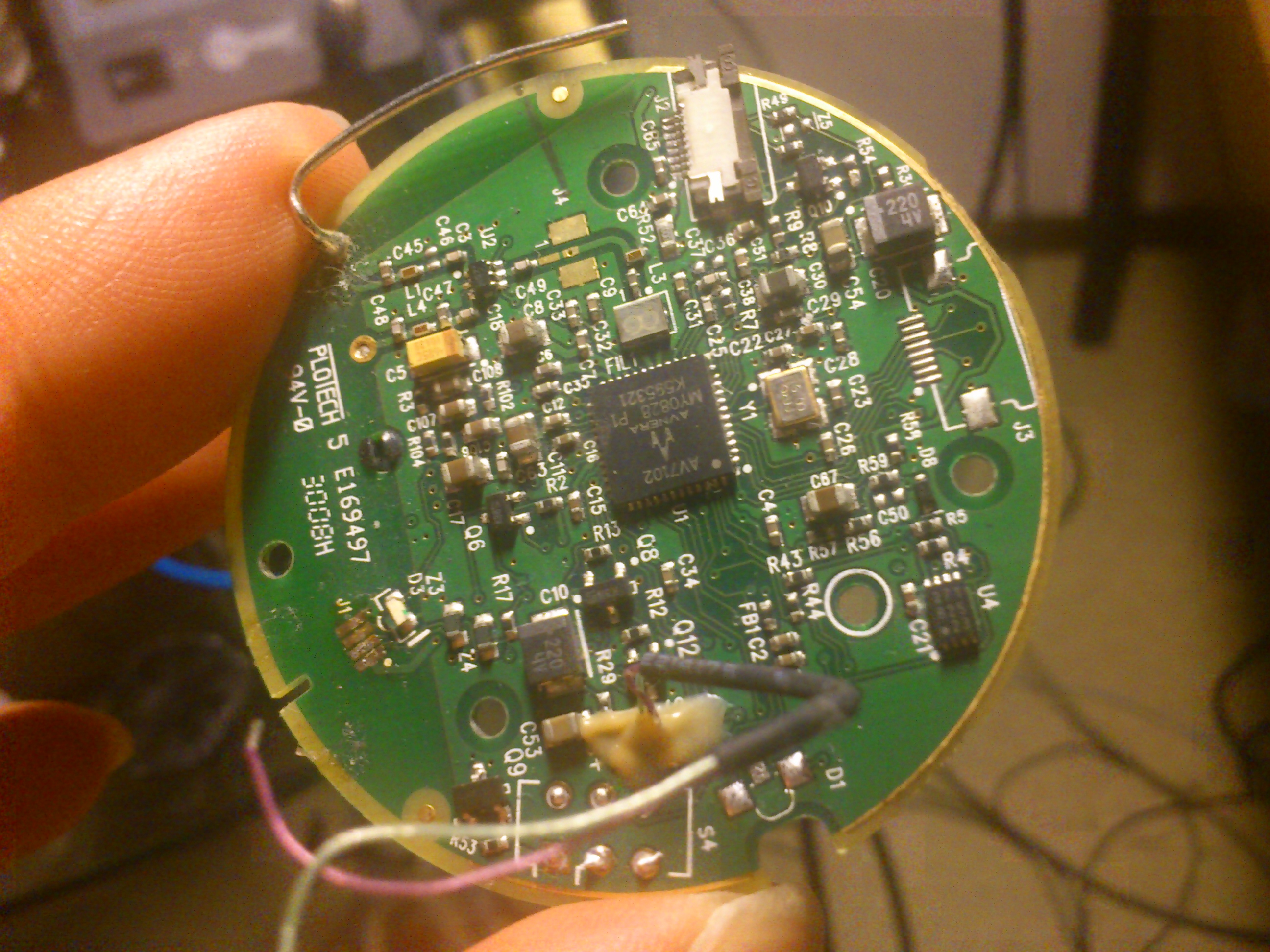 the other side of the board there was number of test points, labeled "TP#", and most of the connectors pins were connected to one of the test points.
the other side of the board there was number of test points, labeled "TP#", and most of the connectors pins were connected to one of the test points.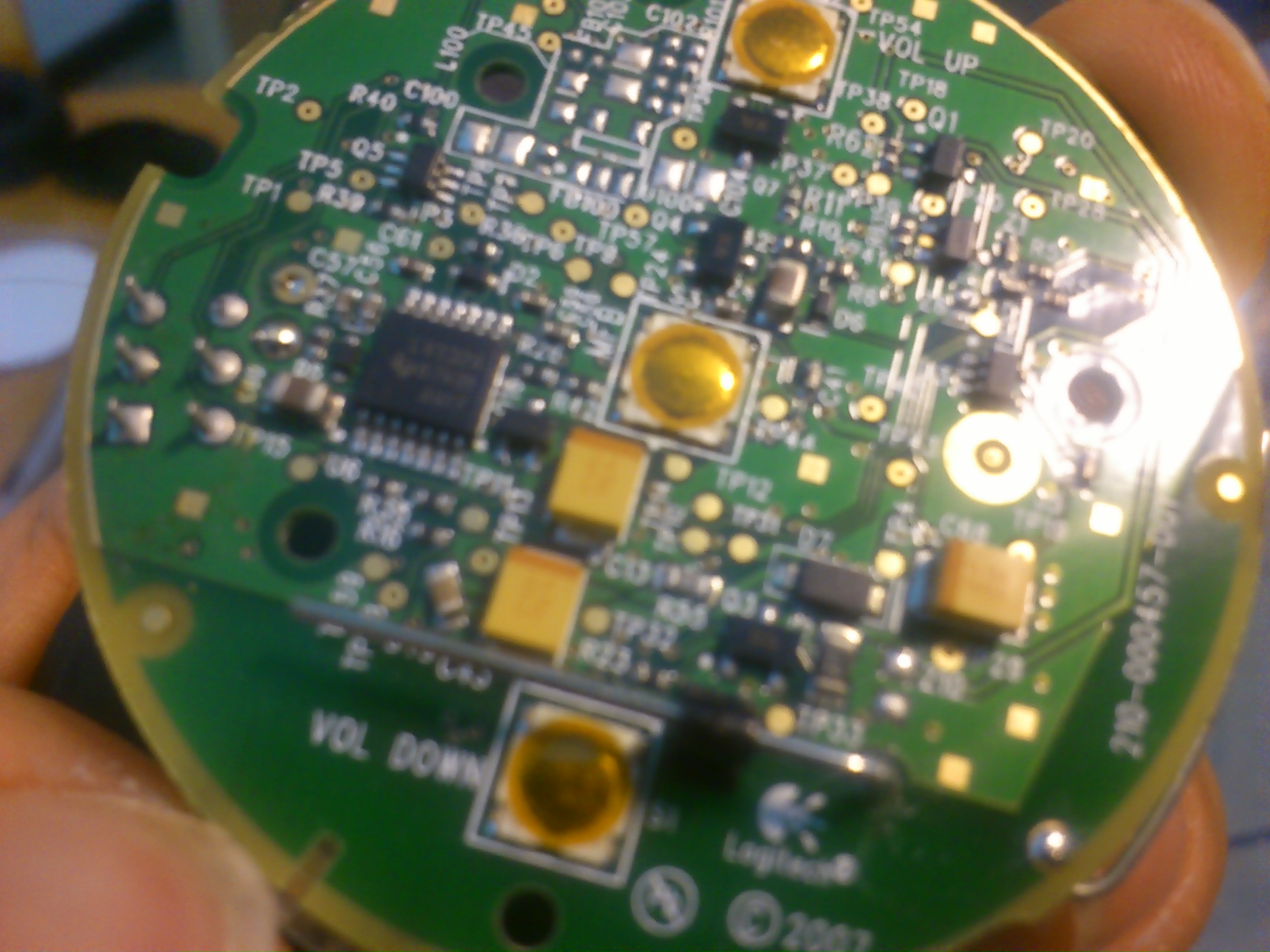 The right headphone side is much simpler, since there is basically no electronic components there, just wires connecting.
The right headphone side is much simpler, since there is basically no electronic components there, just wires connecting.The ear protector cups had two layers, which was a challenge but also a boon, since I could attach buttons and connectors to the inner layer so they are firmly there and don't give in when trying to push the connectors together.
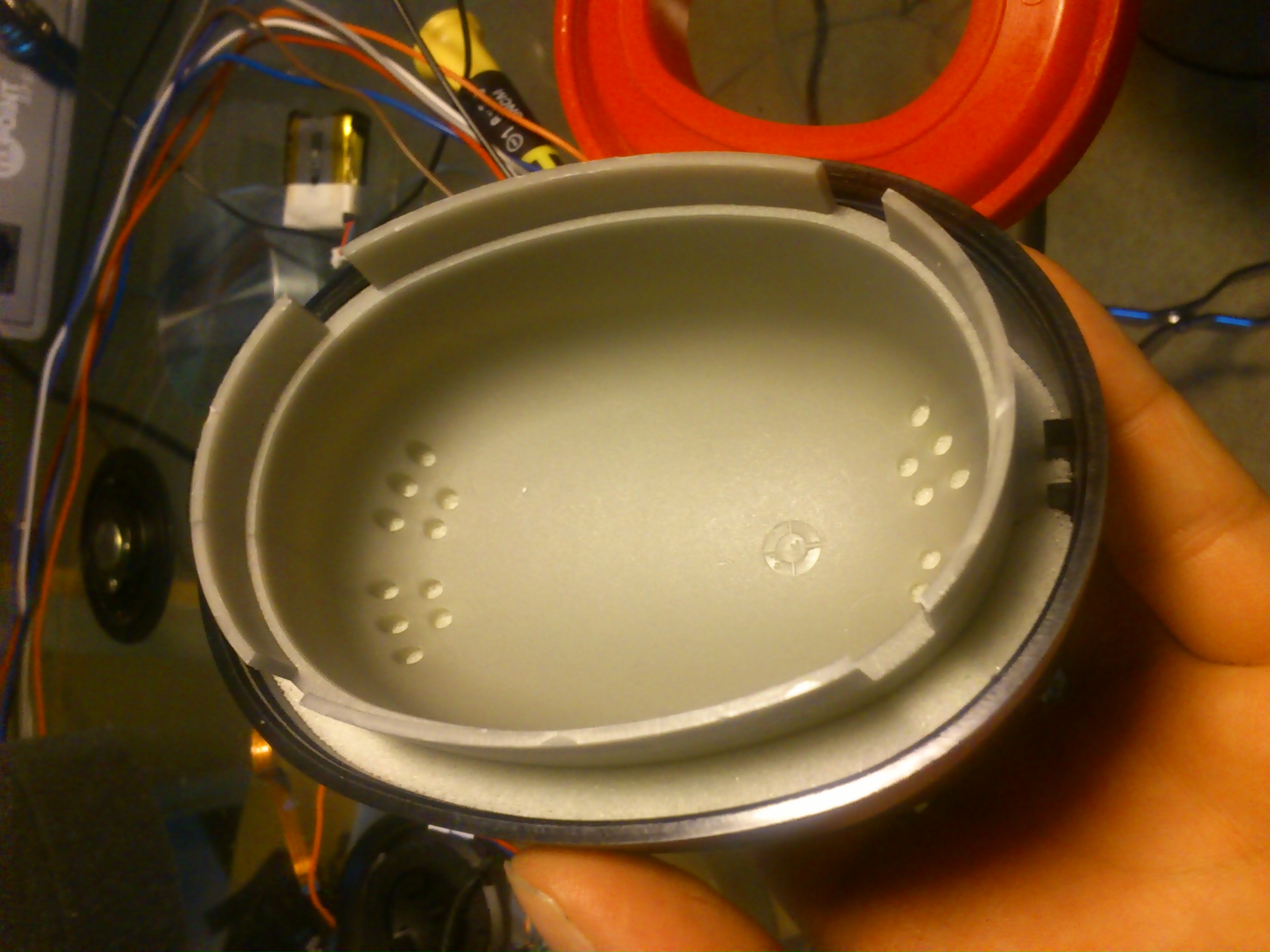 I modified the ear cups by drilling holes for wires and buttons and connectors like below:
I modified the ear cups by drilling holes for wires and buttons and connectors like below: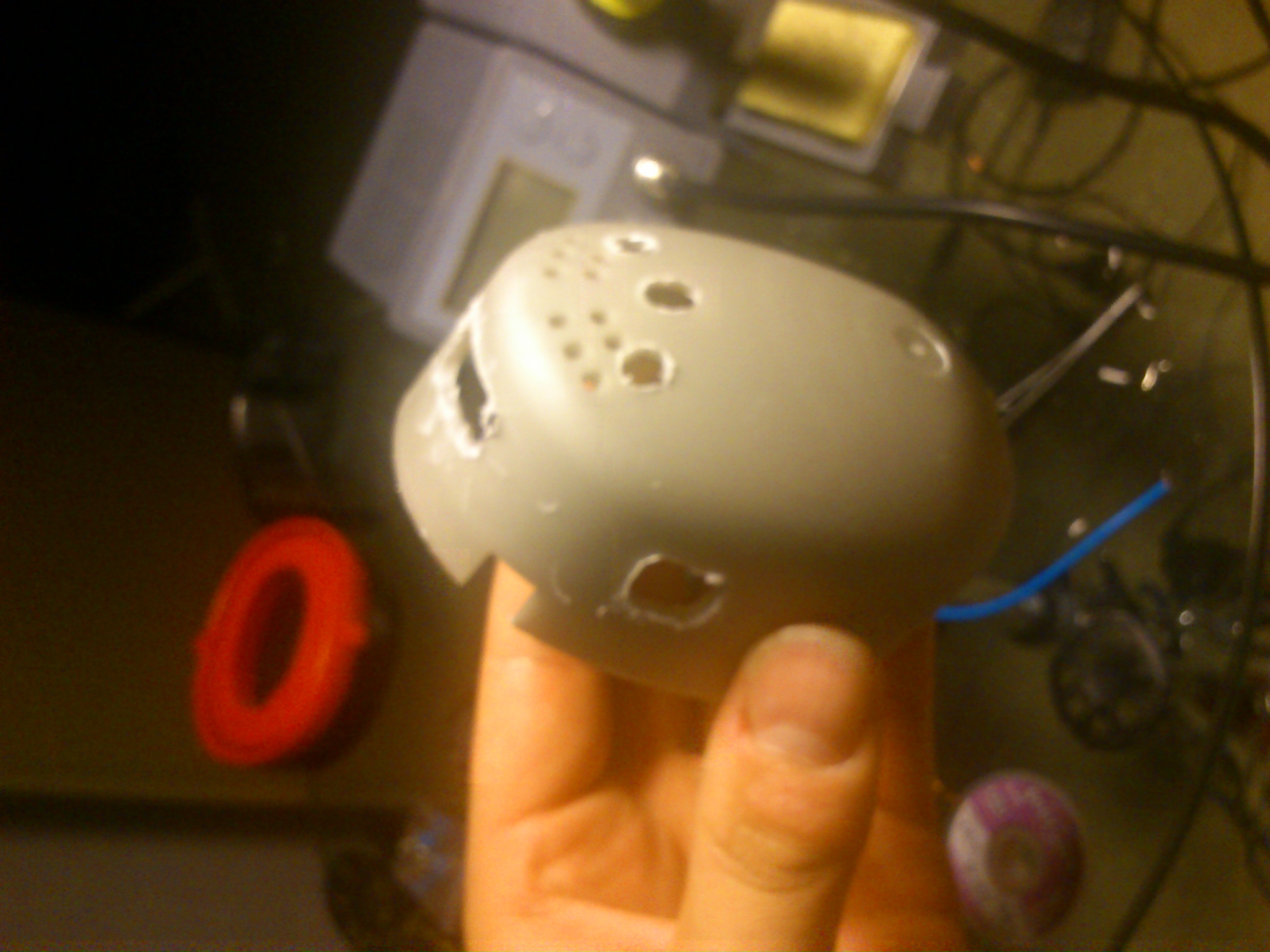
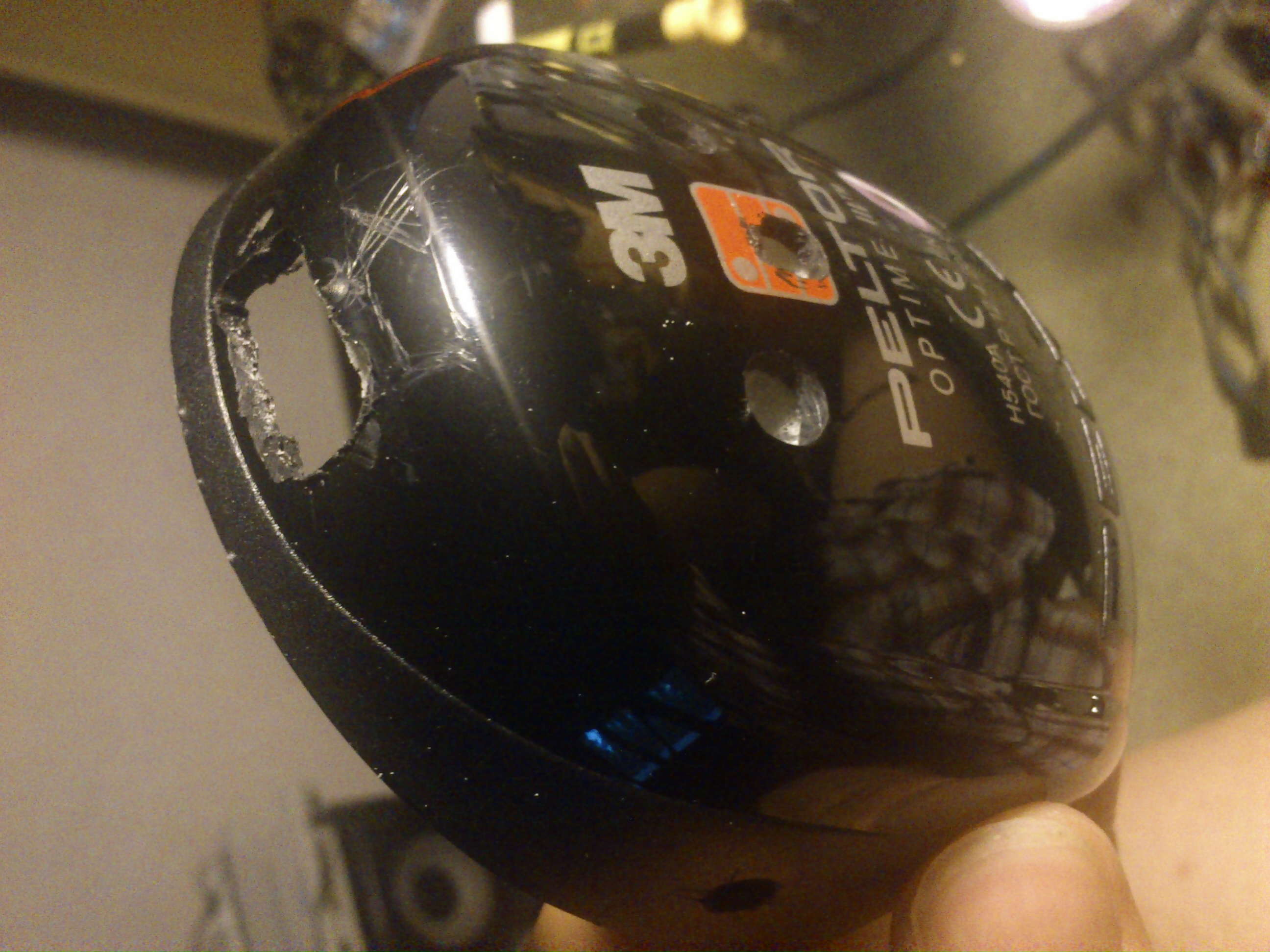
So, after testing out the correct connections, I replaced the flat connector with a general pin header with individual wires soldered and twisted around each other. Unfortunately, the microphone stopped working for some reason, I might have connected some voltage inversed to the mic which broke it. I gave up on it, since it was rather impossible to debug it without an oscilloscope. So I put the rest together, and got rather nice wireless headphones instead of a headset.
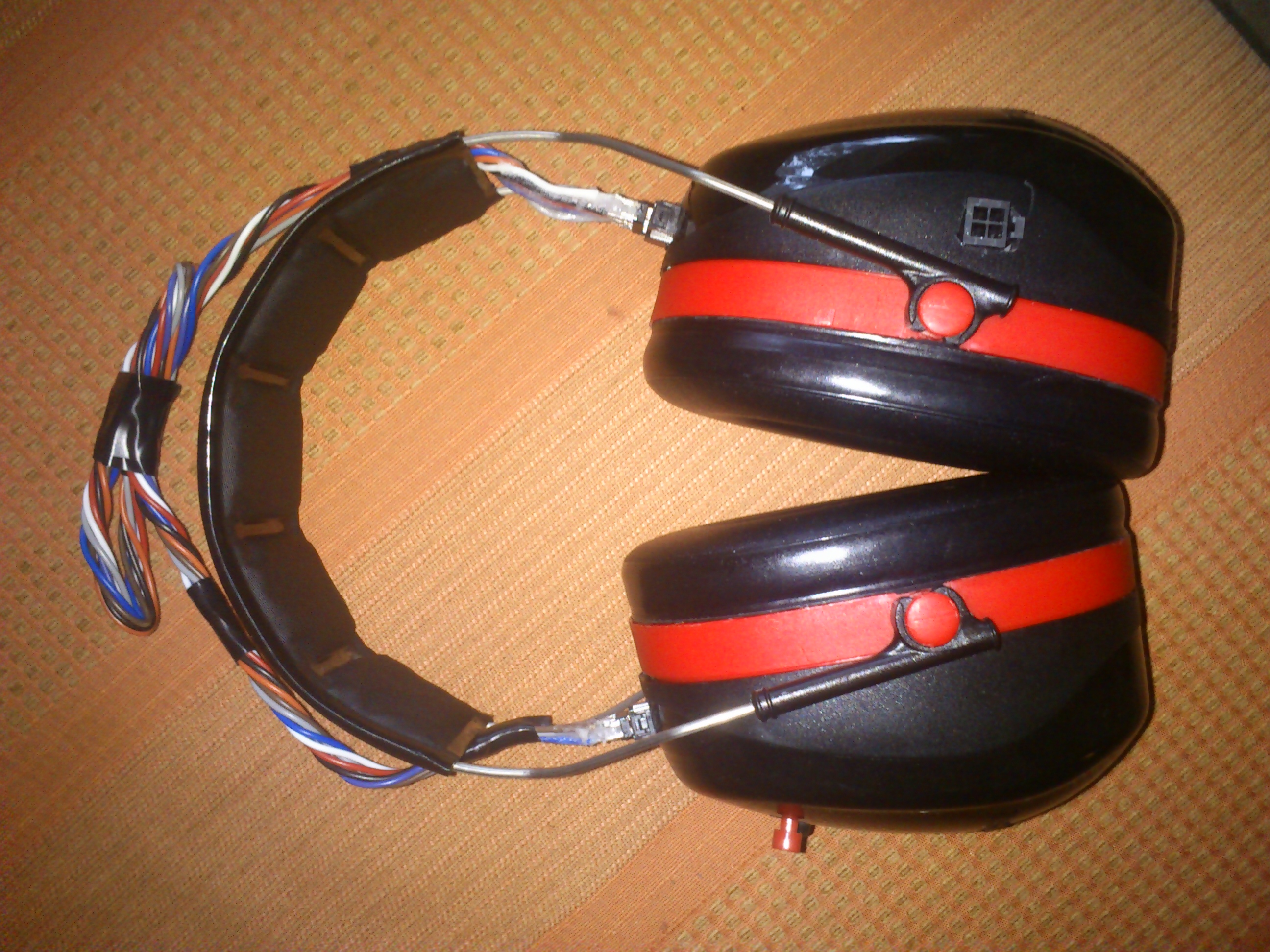 During the process I learned much about what should be taken into account when designing how to fit electronics into their casing. I made a lot of mistakes and hopefully won't make them next time. I'm thinking about making my own electronics for version two, using bluetooth or something as wireless solution, maybe trying to fit it into something smaller than these Peltors.
During the process I learned much about what should be taken into account when designing how to fit electronics into their casing. I made a lot of mistakes and hopefully won't make them next time. I'm thinking about making my own electronics for version two, using bluetooth or something as wireless solution, maybe trying to fit it into something smaller than these Peltors.If you want any details just ask for them, I might make a more detailed post later too, about the wiring and such.
[ add comment ] ( 15681 views ) | permalink | print article |




 ( 3 / 2298 )
( 3 / 2298 )it's an real peltor headset!
but not wireless.. So mine will be better in some respect :)
[ add comment ] ( 673 views ) | permalink | print article |




 ( 3 / 74 )
( 3 / 74 )Ok now, my headset is completely ruined I guess. I bought this logitech ClearChat wireless headset few years ago. After few months the left speaker started cutting. I took it apart and found out some wire had just broken. After replacement it was good as new again. But then, I had to do this like every six months or so. And then the frame started falling apart.. And now it has started cutting again. And it looks like this:
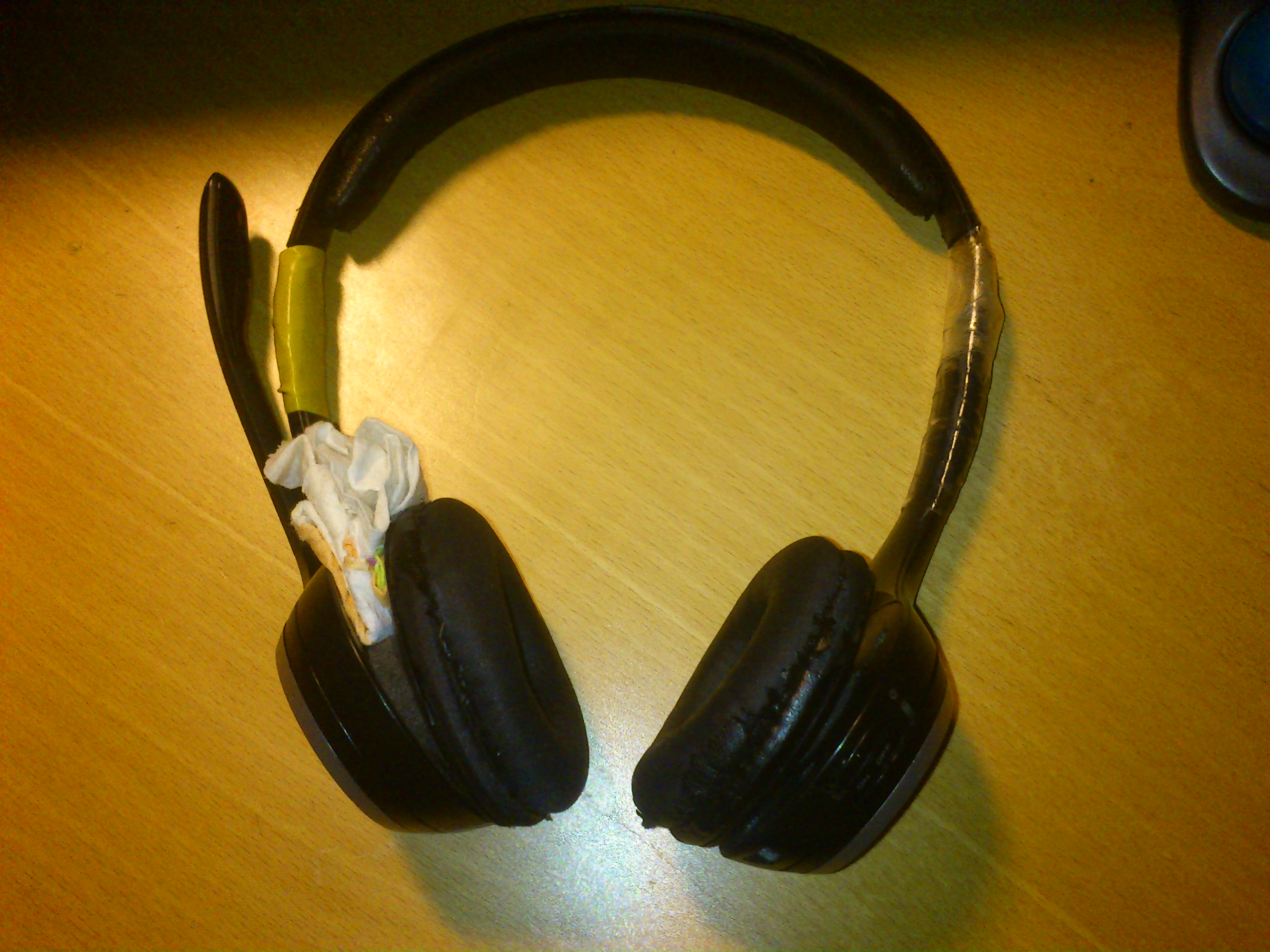
So, I can't push it much further, I have to buy new set I thought at first.. But since the electronics work quite nicely I thought it'd be a waste and started thinkin about fitting the insides to some cheap headset with better frame. But as one could expect, cheap stuff didn't have any good frames.. and then I happened to see some advertisement and I got it. It'd put the stuff inside these Peltor earcups!
Got them pretty cheap (20€) and now I got them:
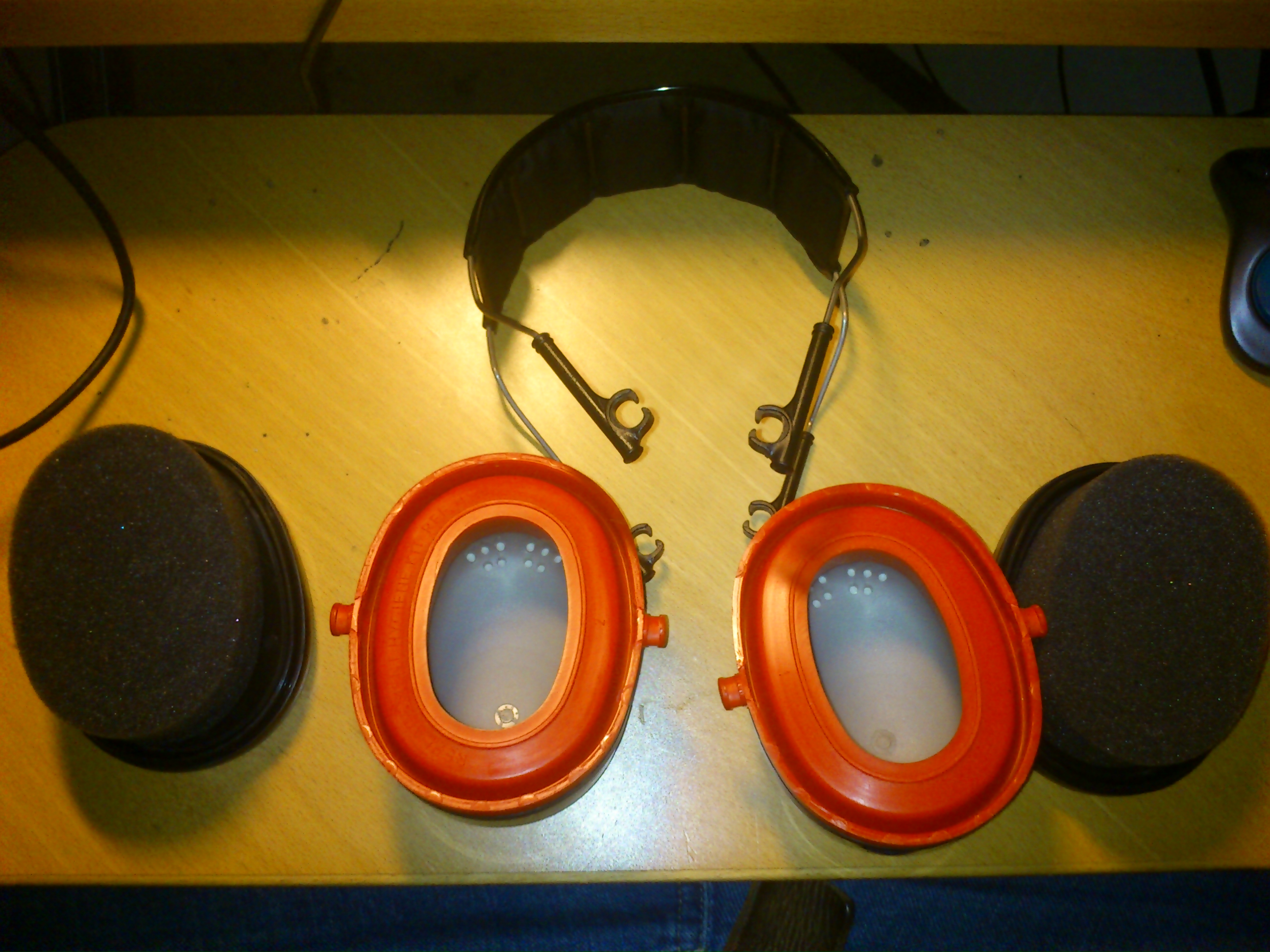
Now I have to plan out the holes, buttons and wiring.. and then it's fitting time!
[ add comment ] ( 1792 views ) | permalink | print article |




 ( 3 / 81 )
( 3 / 81 )I was looking for a free and easy to use, preferably open source circuit diagram editor without any fancy features like simulating and such. I just wanted to draw some simple circuits for my report.
Well, I tried XCircuit, QElectrotech and so on..
and finally found CircuitLab.
I used to be vary about web applications, but this was exactly what I was searching for: Platform independent, intuitive and easy to use, perfect for drawing simple circuits!
If you're interested in electronics, try it out!
[ add comment ] ( 447 views ) | permalink | print article |




 ( 3 / 90 )
( 3 / 90 )